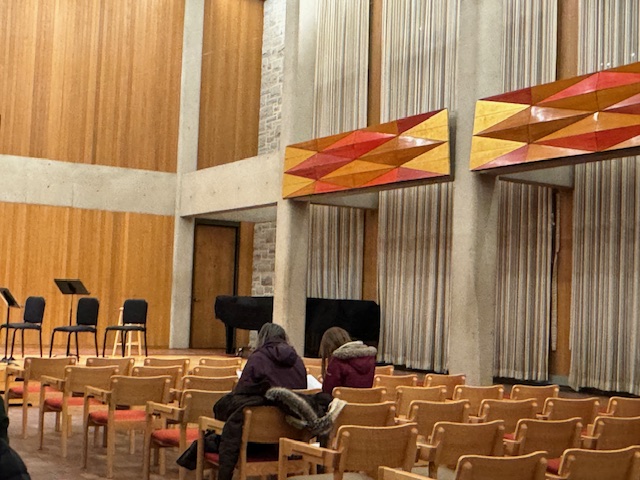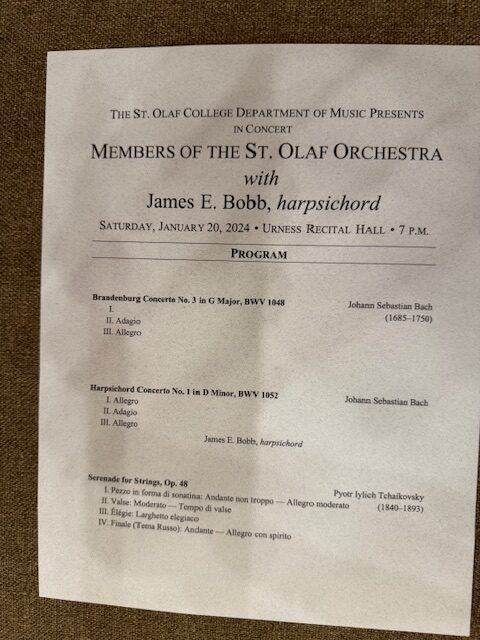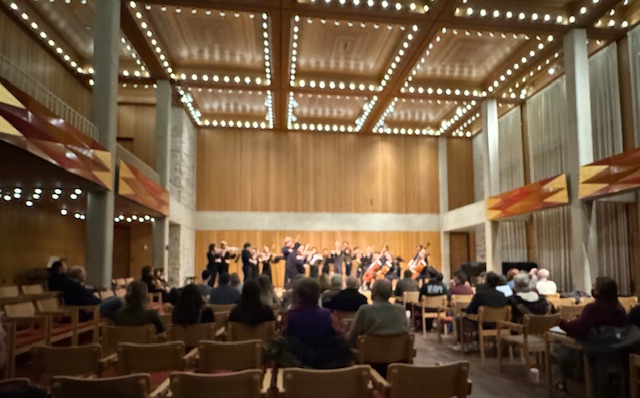Urness Recital Hall on the St. Olaf College campus is a wonderful venue all year long, but it is especially cozy this time of year with its intimate setting and attractive lighting.

We bundled up and went out into the cold night for a 7:00 performance at Urness Hall, knowing it didn’t take long to get to campus, it would be easy to park, it would be a free concert with a reasonable time commitment, and we’d hear some exceptional music.

The venue was maybe half full with students and community members. We sat on an aisle, behind a St. Olaf conductor of a different ensemble, who was in the audience. I’m sure she couldn’t help herself…she was covertly conducting the performance from her seat. She was fun to watch.

There were three musical scores on the program. The first two were composed by Johann Sebastian Bach 1685-1750, a German composer, and they both included the harpsichord. The third piece was composed by Pyotr Lylich Tchaikovsky (1840-1893), a Russian composer.

Apparently during the 16th-18th centuries, the harpsichord became an important European instrument, which may be why Bach’s compositions included the harpsichord.

I don’t know the history of St. Olaf’s harpsichord, but I overheard this was the first time it was played in Urness Recital Hall. James E. Bobb, the conductor of a choral ensemble at St. Olaf, and an organ/harpsichord professor, played the harpsichord during the performance.

The third piece by Tchaikosky was performed by 21 students from the St. Olaf orchestra. They were student-lead by the first chair violin (or viola), and included four string instruments: violin, viola, cello and bass cello. It was a lively, spirited performance. The students really do put a lot into their playing. Not only is it wonderful to hear them play, it’s fun to watch them play.

And so, an hour and 15 minutes later, we were putting our jackets back on and heading home, glad that we took the time to venture out for some high-quality music, being uplifted on this dark, cold January evening.